What Type Of Animal Burrows Into The Ground And Leaves A Mound Of Dirt In A Garden
Print this fact sheet
past Sharon Bokan, Karen Crumbaker, Travis Hoesli, Deborah Lester and Irene Shonle* (2/xvi)
Quick Facts
- The four main kinds of pocket-sized burrowing animals likely to cause damage in Colorado are voles, pocket gophers, prairie dogs, and Wyoming ground squirrels.
- Moles occur only in specific areas on the eastern plains of Colorado. Damage blamed on moles is most likely done past another species.
- Impairment tin can be reduced past habitat modification, exclusion, repellents, trapping, and poison grain baits.
Introduction
There are many burrowing animals (pocket gophers, prairie dogs, voles and Wyoming ground squirrels) in Colorado that can cause damage to lawns, gardens, and pastures. The first step to resolving the problem is to place which animal (or animals) caused the damage. Once this has been determined, refer to the appropriate fact sail for management information: 6.507 Managing Voles in Colorado, half-dozen.515 Managing Pocket Gophers, half-dozen.505 Managing Wyoming Ground Squirrels, or 6.506 Managing Prairie Dogs.
The four main kinds of minor burrowing animals likely to crusade impairment in Colorado are voles (8 species), pocket gophers (iv species), prairie dogs (3 species), and Wyoming ground squirrels. Moles (Scalopus aquaticus) are rarely found in Colorado, and but on the eastern plains (see distribution map below).
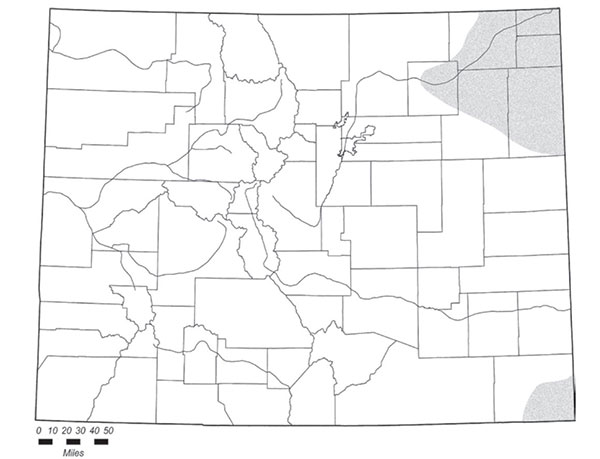 />
/> Figure 1: Moles just occur in Colorado's northeastern plains along the Lower S Platte (Logan, Sedgewick, Phillips, Morgan, Washington and Yuma counties) (Scalopus aquaticus ssp caryi) and in the Cimarron watershed in southeastern Colorado (Baca Canton) (Scalopus aquaticus ssp intermedius).ane
If you lot are exterior that area, the species causing damage is probable one of the other four. Moles are 5-6" long with a cylindrical torso and a slender, hairless, pointed snout, and short, sparsely haired tails. Moles construct shallow tunnels below footing. These tunnels can exist confused with tunnels of the pocket gopher, but moles exercise not leave mounds of soil.
Voles (Myodes, Microtus, Lemmiscus and Phenacomys)
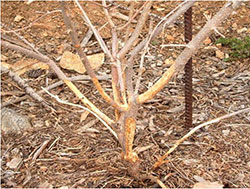
Figure 2: Vole damage on lilac. Observe small-scale, irregular molar marks, all under what was the snow line.
Voles cause several types of damage. They gnaw on tree and shrub bark, sometimes girdling the torso entirely and causing tree and shrub death. Virtually damage occurs in the winter when voles move through their grass runways nether the protection of snow. The greatest damage seems to coincide with years of heavy snowfall when snow cover persists for longer periods.
Vole harm to trees and shrubs is characterized by girdling and patches of irregular patterns of champ marks nearly 1/16 to 1/8-inch wide. Gnawed stems may
have a pointed tip.
 Figure iii: Vole runways in lawn afterwards snow cook in spring. | 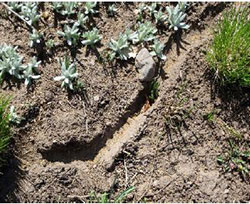 Figure four: Vole burrow and runway in clay soil. |
 | 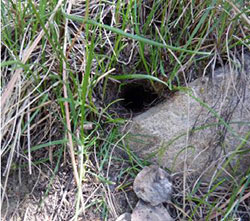 |
Figure 5 and half dozen: Examples of vole holes. They often burrow virtually a stone. | |
Other signs of vole damage include: runways one to 2 inch-wide through disordered grass with open 1-2 inch holes and spongy soil from burrowing action. Long-tailed voles do non make well-defined runways. It is common to run into evidence of voles, as they are agile all year round, and are ofttimes to a higher place ground.
Pocket gophers (Geomys bursarius, Thomomys talpoides and bottae, and Cratogeomys castanops)
Pocket gophers rarely announced above ground, spending most of their lives in burrows. Prairie dogs and Wyoming ground squirrels, on the other hand, are frequently seen above ground. Pocket gophers are alone with merely 1 gopher per couch except during breeding flavour. Prairie dogs and Wyoming ground squirrels both live in colonies.
 | 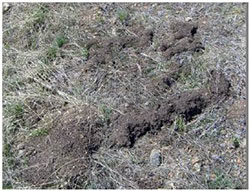 |
Figures 7 and 8: 2 examples of eskers. These soil mounds are seen simply equally the snow melts, and result from burrowing activity nether snowfall cover. Eskers are soil that is excavated during burrow edifice that is pushed into the overlying snowfall. | |
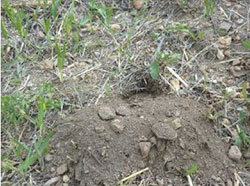 Figure ix: Fan-shaped mound with airtight couch is typical of pocket gophers. | 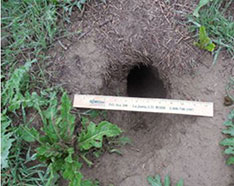 Figure 10: Prairie canis familiaris burrow |
The main signs of harm from pocket gophers include mounds of soil (with no apparent entry pigsty), eskers (solid tubes of soil) to a higher place basis when the snow melts in the bound, and suddenly wilting plants (due to root harm). If you lot walk across an surface area inhabited by pocket gophers, your foot will oftentimes suspension through into their tunnels. The tunnels are usually two.0-iii.v" in bore, and are usually found in the top 4-xviii" of soil. The mounds pocket gophers create are fan-shaped to round and usually take closed entrances, unlike those of prairie dogs and Wyoming ground squirrels.
Prairie dogs (Cynomys ludovicianus, Cynomys gunnisoni, Cynomys leucurus)
Prairie dogs are not related to dogs (Canis) just are large ground squirrels (Cynomys). There are 3 prairie dog species (black tailed, Gunnison and white tailed) in Colorado but the virtually common along the Front Range and Eastern Plains is the blackness-tailed prairie dog (Cynomys ludovicianus). Prairie dogs live in coteries (family units) inside the larger colony.
 Figure eleven: A crater mound formed in moist soil. Notation the nose prints made in side of mound when the prairie dog compacted the soil. | 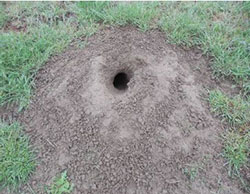 Figure 12: Prairie domestic dog couch and mound. |
Prairie dogs cause damage to pastures by removing vegetation. The damage first appears as holes four – 8" in diameter with the vegetation clipped back abroad from the holes. Over time the prairie dogs build a mound effectually the holes. Mounds may be dome or crater shaped. They prune and consume the vegetation around the holes partly for forage and nesting cloth, but also to provide better predator detection. They will also dig holes to eat plant roots. They live in colonies so their harm extends beyond the single holes to cover the whole colony.
It is common to see prairie dogs when they are present, as they are active all year round, and are frequently in a higher place footing. Periods of prolonged rain or snow cause the prairie dogs to retreat to their burrows.
Wyoming ground squirrel (Urocitellus elegans)
This species of ground squirrel was formerly known as Richardson's ground squirrel. Wyoming ground squirrels can exist confused with prairie dogs, especially Gunnison's prairie dog. Wyoming basis squirrels usually live at college elevations (half dozen,000 – 12,000') than blackness-tailed prairie dogs (three,315 – 7,200). They are found primarily in central to northern Colorado, west of the Front Range. The Wyoming footing squirrel is diurnal, emerging from its couch before long after sunrise and returning earlier sunset. The ground squirrel lives in colonies but the individuals may not exist related. Ground squirrels hibernate in the winter dissimilar blackness-tailed prairie dogs.
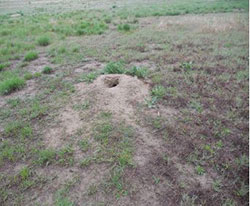 Figure 13: Weedy surface area around mound where previously existing vegetation was removed past the prairie dogs. | 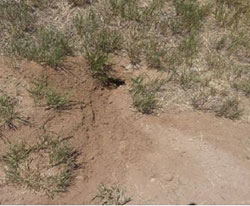 Effigy xiv: A newly formed Wyoming ground squirrel burrow and mound. Note the similar fanning to pocket gopher holes. Wyoming ground squirrel burrows remain open. |
1Distribution Maps: Armstrong, David Thou., James P. Fitzgerald, and Carron A. Meaney. 2011. Mammals of Colorado 2nd ed. Colorado: Denver Museum of Nature & Science and University Press of Colorado.
*S. Bokan, Pocket-sized Acreage Coordinator Bedrock County; K. Crumbaker, Ag and Natural Resources Amanuensis Larimer County; T. Hoesli, 1000 County Extension Canton Director; D. Lester, Park County Extension County Director, and I. Shonle, Gilpin County Extension County Managing director. (ii/16).
Colorado Country University, U.Southward. Section of Agronomics and Colorado counties cooperating. Extension programs are bachelor to all without discrimination. No endorsement of products mentioned is intended nor is criticism implied of products not mentioned.
Source: https://extension.colostate.edu/topic-areas/natural-resources/burrowing-animals-determining-species-by-burrows-damage-6-521/
Posted by: goodmancrooking1973.blogspot.com

0 Response to "What Type Of Animal Burrows Into The Ground And Leaves A Mound Of Dirt In A Garden"
Post a Comment